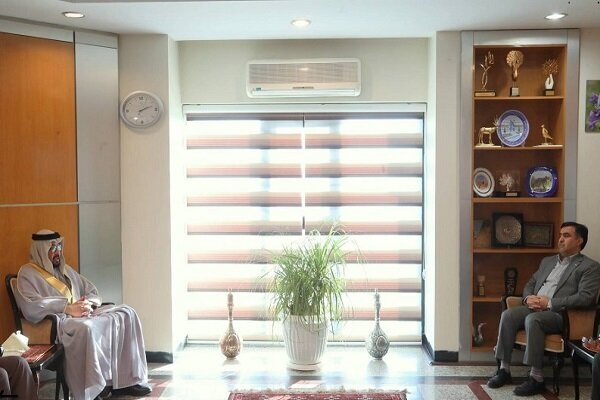Iran, UAE underscore environmental cooperation in region

TEHRAN – Iranian Department of Environment Chief Ali Salajeqeh in a meeting with the United Arab Emirates Ambassador to Iran Saif Mohammed Al Zaabi emphasized the need to boost regional cooperation in order to tackle environmental problems.
The issue of dust storms has caused harassment to all the people of the region, Salajeqeh said, adding, the problem can be managed with the cooperation of regional countries, Mehr reported on Monday.
He referred to the pollution of joint waterways as one of the main environmental challenges in the region, emphasizing that this problem can be solved through Ropmi (Regional Organization for the Protection of the Marine Environment of the Persian Gulf).
Salajeqeh expressed satisfaction with holding the 28th session of the Conference of the Parties (COP 28) in the United Arab Emirates next year, saying: “We hope that holding this summit will have good results for the challenge of climate change.”
The UAE official for his part highlighted that the preliminary agreement previously signed by the environment chiefs of the two countries should take effect.
In July 2022, Tehran played host to a conference of ministers and officials from 11 countries, aiming to boost cooperation for resolving extant environmental problems, especially sand and dust storms.
Environment ministers of Iraq, Armenia, the United Arab Emirates, Oman, Syria, and Qatar, as well as deputy ministers of Azerbaijan and Turkmenistan along with delegations from Turkey and Uzbekistan, participated in the event which was held with the theme of “Environmental Cooperation for a Better Future.”
Addressing the opening ceremony, President Ebrahim Raisi emphasized that the preservation of the environment is essential and an inevitable priority.
A union or an organization for environmental cooperation of West Asian countries should be formed to organize the required measures. Also, the establishment of a regional fund for financial support is necessary to achieve the goals of the UN resolutions, he highlighted.
Sand and dust storms (SDSs) have been plaguing the country for several years and have caused problems in many provinces. According to experts, natural and human factors are involved in the occurrence and severity of this phenomenon which is mainly caused by excessive consumption of water and drying up reservoirs.
The internal dust sources are estimated at 34.6 million hectares, generating an average amount of 4.22 million tons of dust per year, about 1.460 million hectares are dried wetlands.
Some 4.23 million tons of dust are raised per year, which means the loss of soil fertility will hit the agricultural sector.
All the SDSs sources are not located in Iran, 300 million hectares in the neighboring countries are giving rise to SDSs, which transport dust into Iran. The total dust density is estimated at about 150 million tons.
In fact, the dust is raised from Turkmenistan, Uzbekistan, Afghanistan, and Pakistan in the northeast as well as Iraq, Syria, Saudi Arabia, and Jordan in the south, southwest, and west.
Letizia Rossano, the director of the Asian and Pacific Centre for the Development of Disaster Information Management (APDIM), said in June 2022 that Iran is really at forefront of understanding the problem of sand and dust storms as well as dealing with it.
More than 80 percent of the entire populations of Turkmenistan, Pakistan, Uzbekistan, Tajikistan, and the Islamic Republic of Iran are exposed to medium and high levels of poor air quality due to sand and dust storms," she noted.
MG
Leave a Comment